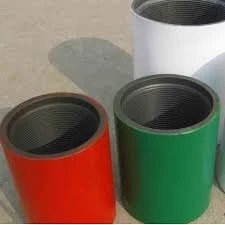- Afrikaans
- Albanian
- Amharic
- Arabic
- Armenian
- Azerbaijani
- Basque
- Belarusian
- Bengali
- Bosnian
- Bulgarian
- Catalan
- Cebuano
- Corsican
- Croatian
- Czech
- Danish
- Dutch
- English
- Esperanto
- Estonian
- Finnish
- French
- Frisian
- Galician
- Georgian
- German
- Greek
- Gujarati
- Haitian Creole
- hausa
- hawaiian
- Hebrew
- Hindi
- Miao
- Hungarian
- Icelandic
- igbo
- Indonesian
- irish
- Italian
- Japanese
- Javanese
- Kannada
- kazakh
- Khmer
- Rwandese
- Korean
- Kurdish
- Kyrgyz
- Lao
- Latin
- Latvian
- Lithuanian
- Luxembourgish
- Macedonian
- Malgashi
- Malay
- Malayalam
- Maltese
- Maori
- Marathi
- Mongolian
- Myanmar
- Nepali
- Norwegian
- Norwegian
- Occitan
- Pashto
- Persian
- Polish
- Portuguese
- Punjabi
- Romanian
- Russian
- Samoan
- Scottish Gaelic
- Serbian
- Sesotho
- Shona
- Sindhi
- Sinhala
- Slovak
- Slovenian
- Somali
- Spanish
- Sundanese
- Swahili
- Swedish
- Tagalog
- Tajik
- Tamil
- Tatar
- Telugu
- Thai
- Turkish
- Turkmen
- Ukrainian
- Urdu
- Uighur
- Uzbek
- Vietnamese
- Welsh
- Bantu
- Yiddish
- Yoruba
- Zulu
Compression Tubing Couplers for Efficient Fluid Transfer and Connection Solutions
Understanding Compression Tubing Couplers A Comprehensive Overview
Compression tubing couplers are essential components in various industrial applications, serving a crucial role in fluid and gas transfer systems. These couplers provide a reliable method to connect two sections of tubing, ensuring a leak-proof, secure connection that can withstand high pressures. This article will discuss the purpose, types, installation procedures, and considerations important for selecting compression tubing couplers.
What is a Compression Tubing Coupler?
A compression tubing coupler is a fitting designed to connect two pieces of tubing or pipe without the need for welding, soldering, or additional fasteners. It employs a compression mechanism that involves a compression ring or ferrule. When the coupler is tightened, the ring compresses against the tubing, creating a strong seal that prevents leaks.
These couplers are widely utilized in various settings, including plumbing, HVAC, automotive, and industrial applications. They are compatible with different types of tubing materials, such as copper, brass, plastic, and stainless steel, making them versatile solutions for a broad array of systems.
Key Benefits of Compression Tubing Couplers
1. Ease of Installation One of the primary advantages of using compression tubing couplers is their straightforward installation process. Users can quickly connect or disconnect components without specialized tools or equipment.
2. Leak-Proof Connections When correctly installed, compression couplers provide leak-proof seals. This feature is particularly crucial in systems where fluids are transported under pressure, minimizing the risk of leaks that could lead to waste or hazardous situations.
3. Versatility Compression couplers come in various sizes and materials, allowing them to be used in many applications— from residential plumbing to industrial machinery.
4. Reusability Many compression fittings are designed to be reused, making them a cost-effective choice. After being removed, they can often be reinstalled without compromising the seal integrity.
Types of Compression Tubing Couplers
Compression couplers are available in several forms to meet different needs
1. Straight Couplers These straightforward connectors join two equal-diameter tubes in a straight line, perfect for extending the length of existing piping.
compression tubing coupler

2. Reducing Couplers Designed to connect tubes and pipes of varying diameters, reducing couplers facilitate the transition from a larger to a smaller size or vice versa.
3. Elbow Couplers These fittings allow for directional changes in piping. They typically come in 90-degree and 45-degree angles, allowing for flexibility in designing fluid transfer systems.
4. Tee and Cross Couplers These types enable the branching of piping systems, allowing multiple connections from a single tubing line.
Installation Tips
Installing compression tubing couplers generally involves the following steps
1. Cutting the Tubing Ensure that the tubing ends being connected are straight and cleanly cut. This helps achieve a better seal.
2. Sliding on the Nut and Ferrule Place the compression nut behind the ferrule on the tubing end.
3. Inserting the Tubing Push the tubing into the coupler until it’s fully seated.
4. Tightening While holding the coupler in place, tighten the nut onto the coupler by hand and then use a wrench for an additional quarter to half turn. Avoid overtightening, as this may damage the ferrule or tube.
5. Testing for Leaks Once installed, it’s recommended to test the connection under normal operating conditions to ensure that there are no leaks.
Conclusion
Compression tubing couplers play a vital role in creating secure, versatile, and leak-proof connections in various piping systems. Their ease of use and effectiveness make them a preferred choice among professionals across multiple industries. As with any mechanical connection, proper selection and installation are essential to ensure optimal performance and longevity of the system. By understanding the types and benefits of compression couplers, users can make informed decisions to enhance system reliability and efficiency.
-
Tubing Pup Joints: Essential Components for Oil and Gas OperationsNewsJul.10,2025
-
Pup Joints: Essential Components for Reliable Drilling OperationsNewsJul.10,2025
-
Pipe Couplings: Connecting Your World EfficientlyNewsJul.10,2025
-
Mastering Oilfield Operations with Quality Tubing and CasingNewsJul.10,2025
-
High-Quality Casing Couplings for Every NeedNewsJul.10,2025
-
Boost Your Drilling Efficiency with Premium Crossover Tools & Seating NipplesNewsJul.10,2025







